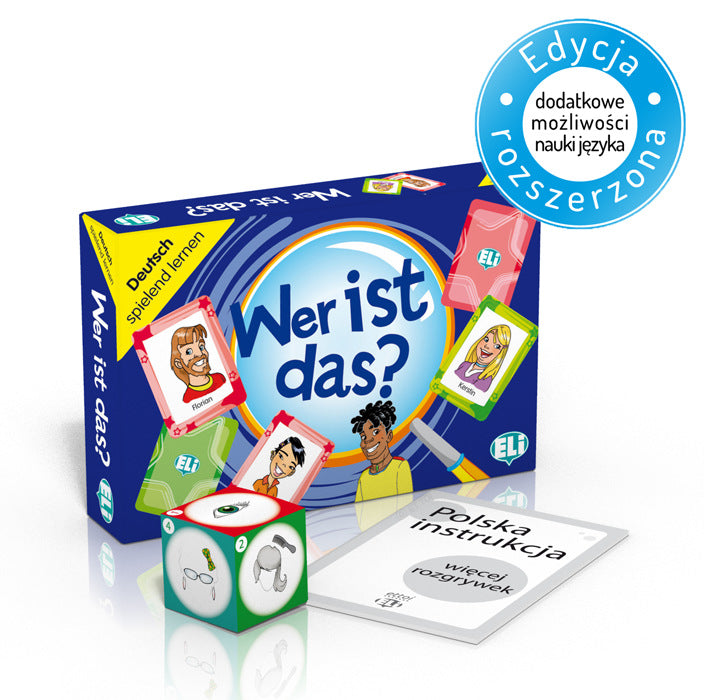- Home
- Games - German
- Wer ist das?
Product Details
- Binding: PAPERBACK
- ISBN-10: 8881483076
- ISBN-13: 9788853611727
- Language: German
- Level: Beginners
- Publisher: ELI
- Publishing Date: 2007
- Series : WER IST DAS?
- Subtitle: Games
- Subject: German
About The Book
One of many possible game scenarios:Players have two identical decks of cards at their disposal. One of them should be placed on the table so that all cards are visible to the participants of the game. Then, each player draws one card from the other deck, paying attention not to show his card to other players, and then each person in turn asks his neighbor a question about the selected appearance feature of the character on his card (in asking questions, he may also use whole group share.). The received answers (which should be limited to the "yes" or "no" form only) allow the questioner (or group) to exclude further characters from the deck of cards spread out on the table and narrow the scope of the search. Player,
Linguistic objectives: learn vocabulary and expressions of German-related description of the characteristics of physical appearance
Age Range: children from 7 years of age, adolescents, adults
Use: The game is applicable both during classes at school and at home (fun with friends and family, or private German lessons).
Additional benefits: The game Wer ist das? improves mental skills such as memory, concentration and perceptiveness, promotes effective remembering and teaches activity and healthy competition, and its ludic character helps in establishing social relations with other participants of the game and has a positive effect on reducing the distance between the student and the teacher.
Additional cube: The game has been enriched with new variants of games thanks to the use of an additional dice extending the educational scope of the game.
Extended instructions: The game comes with an extensive instruction in Polish containing:
- methodological introduction for teachers, parents and the players themselves,
- extensive game scenarios,
- proposals for educational games and exercises.
The instruction in Polish is also a convenience for people who do not know the foreign language sufficiently to read the original, foreign-language version of the instruction, as well as the ability to independently manage language and educational games with children or peers.

+919650597000
Call us on

goyalshopify@gmail.com
write to us on

+919650597009
Whats'App Enquire & Order










